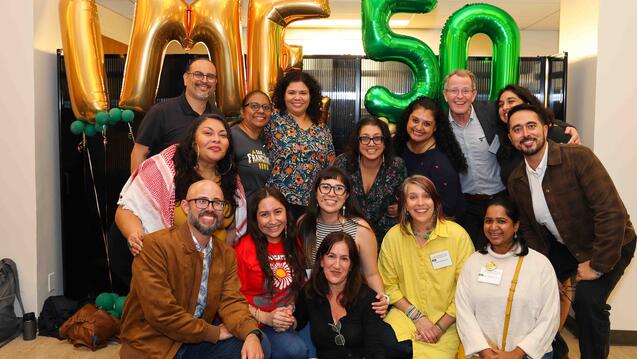Walking in Leadership

Successful women come to the C-Suite from all walks of life. We all seek to be heard, to be listened to, and to be respected, both personally and professionally. But how do we get to the top? Is there one road map to follow?
Despite different careers, lives, and experiences, these women came to a consensus on what helped them navigate challenges and earn their executive status: know your worth in all situations, listen more and talk less, ask questions, and don’t do it alone.
Five women in positions of leadership and power across industries throughout the Bay Area shared their experiences with attendees at USF’s annual Women in Leadership & Philanthropy Spring Symposium. The panel of female leaders included:
- Kiwoba Allaire, founder and CEO of Girl STEM Stars
- Judy Miner LMA ‘73, LMA MA ’77, EdD ’82, chancellor of the Foothill De Anza Community College District
- Noreen Farrell, executive director of Equal Rights Advocates
- Michelle Marie Ritchie, chief marketing officer of Go Raw
- Shirley McGuire, senior vice provost for academic affairs and professor of psychology at USF
What the Walk Looks Like
There isn’t one walk to leadership. Miner, Ritchie, and Farrell were each the first in their families to attend and graduate from college. Allaire was inspired to aim for leadership because of her mother, who was the first female black executive at the company Emporium Capwell.
Although these c-suite executives and entrepreneurs came to leadership through different paths, one thing they agree on is that, once you achieve it through hard work and tenacity, it is well deserved.
“We all earned it. Each female here has earned it through our hard work and accomplishments,” Farrell said. “My drive for leadership came because I wanted to be in a position to build a bigger movement.”
All of the women cited their personal unwavering commitment, drive, and passion for their careers, but navigating their way to various leadership positions did not come without both challenges and lessons learned.
“I wish I had known that being right is not enough,” Miner said. “There is so much surrounding alliances and soft skills and compromise that is essential. Also, taking the measure of battles you really want to go to the mat on, and sometimes accepting that others will never change in difficult situations.”
Coming to any conversation — especially difficult ones— preparation is important in walking the path of leadership, the panelists agreed.
“Coming to the table with data and facts can be really critical in aligning others who may be part of the conversations you need to have,” Ritchie said. “Having allies and mentors is critical as well. They don’t always have to be in your industry but make sure you connect with individuals who can guide you on how to deal with business issues, people issues, and in your personal life. Building a good relationship with those around you will help you navigate to where you want to go.”
Do What Moves You
Having the desire to lead and make a change is important, but finding a cause or work that resonates with your personal mission is equally important.
“I thought about what bugged me the most: not seeing anyone who looked like me, a woman of color, in many tech companies,” Allaire said. “It actually took a near-death experience for me to realize that I could be the change and I could bring someone up with me instead of giving a handout. Do what moves you and what touches your heart.”
“Identify what your next movement is and what is in the way of it,” Farrell added. “People come and want to join you. They want to be part of something that is moving the movement.”
Learn more about supporting Women in Leadership & Philanthropy


